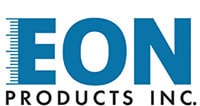Elevating Efficiency: The Compelling Advantages of Passive Groundwater Sampling
As groundwater sampling requirements have expanded, the use of efficient, cost-effective, and environmentally friendly sampling techniques have become a more common solution. Passive sampling offers numerous advantages over traditional active sampling techniques that rely on pumping and/or purging.
This article explores the many advantages of passive groundwater sampling for those familiar with conventional groundwater sampling but new to this simpler approach.
Cost Efficiency of Passive Groundwater Sampling: Maximizing Budgets
One of the most immediate benefits of passive sampling is its impact on project budgets.
By eliminating the need for expensive pumps and the associated maintenance, consultants can see a decrease in equipment purchase and maintenance costs. More significantly, the reduction of time on-site decreases the labor cost within a groundwater monitoring program.
Industry studies corroborate these findings, with reports indicating that passive sampling can reduce sampling costs by 50-70% compared to traditional methods (source: Former McClellan AFB Study)
Smart Spending with Long-term Gains
Once passive sampling is implemented, the labor reduction can be applied again and again across multiple monitoring events, offering long-term savings. This reduction in labor cost, coupled with the minimal initial setup cost and reduced equipment needs, makes passive sampling a financially savvy choice.
Time Savings: Accelerating Project Timelines
Traditional sampling methods involve purging 3-5 well volumes or pumping until the water quality parameters stabilize. These processes can take hours or even days on large project sites.
Passive sampling eliminates these time-consuming steps, allowing for immediate sample collection upon retrieval of the samplers. This reduction in sample time can free up consultants to spend their time on other areas, such as remediation or compliance.
Reducing Waste: A Sustainable Approach
Environmental sustainability is an added benefit of passive sampling. Passive methods do not generate purge-water waste, a common byproduct of traditional sampling methods. In the case of hazardous contaminants like PFAS, the logistics, expense, and environmental impact of waste storage and disposal are eliminated. Less hazardous waste means a cleaner and safer work environment.
Alignment with Environmental Stewardship
Passive sampling reflects the industry’s move towards more sustainable practices, aligning with the values of clients and stakeholders who prioritize environmental responsibility. Less equipment, no gasoline, batteries, or air compressors with their life-cycle impacts.
Reliable Results: Trust in Data Integrity
The integrity of sampling data is paramount, and passive sampling provides results that consultants can trust. By sampling the natural flow of groundwater as it refreshes the screened interval, accurate samples representing the aquifer can be collected without disturbing the stagnant or aerated water at other levels in the well. Over a million deployments and numerous third-party studies over the years have validated passive sampling as a reliable sampling method.
Consistency Across Sampling Events
Passive sampling methods offer consistent results over multiple sampling events. This consistency is critical for monitoring and assessing long-term trends in groundwater quality.
Industry Endorsement: The Professional Perspective
The environmental consulting industry is increasingly recognizing the benefits of passive sampling. Professional bodies and regulatory agencies endorse and use passive methods as best practices where appropriate. This professional validation is a testament to the method’s reliability and effectiveness.
Leveraging Industry Studies for Credibility
Citing industry studies and professional endorsements within environmental reports reinforces the credibility of passive sampling methodologies. For instance, studies by the Interstate Technology & Regulatory Council (ITRC) have provided guidance on the use of passive samplers, emphasizing their advantages in various monitoring scenarios.
Final Thoughts: Embracing Passive Sampling
Passive groundwater sampling offers cost efficiency, time savings, waste reduction, and reliable results that can significantly enhance the environmental monitoring and consulting landscape. For consultants ready to embrace these advantages, passive sampling is not just an option—it’s the next step towards smarter, sustainable, and scientifically robust groundwater monitoring.
Passive sampling is changing the landscape of groundwater monitoring. Are you ready to be part of this change and lead your projects with efficiency and environmental integrity?
Book a free consultation to learn more.
Read The Ultimate Guide to Passive Groundwater Sampling to learn more.
Frequently Asked Questions
The introduction of passive sampling can:
- Position a consultancy as a leader in innovative, cost-effective monitoring solutions.
- Attract clients interested in sustainable and less invasive monitoring methods.
- Enhance the consultancy’s ability to operate in sensitive environments where traditional methods are less feasible.
- Reduce costs and improve profit margins for groundwater monitoring projects.
Challenges include:
- Gaining acceptance for passive methods as compliant with regulatory standards.
- Demonstrating that passive sampling provides data of equal or superior quality to traditional methods.
Addressing these challenges can involve:
- Engaging with regulators early in the transition process.
- Running side-by-side tests to demonstrate the effectiveness of passive sampling.
- Contributing to or citing peer-reviewed studies that validate passive sampling methods.
- Providing clear, transparent data and reports highlighting the reliability and relevance of passive sampling data.
